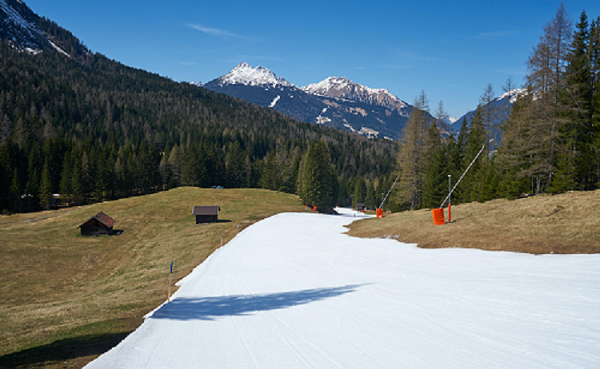Our project aims to address the challenges of energy consumption and sustainability in ski resorts. These ski resorts are known to be high energy consumers, especially for the production of artificial snow. Therefore, the main objective of our project is to find and promote innovative solutions that will help ski resorts to reduce their energy consumption and improve their sustainability, while ensuring an enjoyable skiing experience for visitors.
To achieve our goals, we will conduct an in-depth study and analysis of the current energy consumption of ski resorts and assess the environmental impact of artificial snowmaking. Based on this analysis, we will identify and evaluate potential technologies, practices and measures that can help reduce energy consumption and improve the sustainability of ski areas.
Our project aims to address the energy consumption and sustainability practices of ski resorts. Ski resorts are significant consumers of energy, with a large portion being used for the creation of artificial snow. This project seeks to identify and promote innovative solutions that can help ski resorts reduce their energy consumption and increase sustainability, while also maintaining the quality and quantity of snow for skiers and snowboarders.
Objectives:
Conduct research and analysis on the current energy consumption of ski resorts and the impact of artificial snow creation on the environment.
Identify and evaluate potential technologies, practices, and policies that can reduce energy consumption and increase sustainability in ski resorts.
Here are 10 important terms regarding artificial snow in ski resorts:
Snowmaking: The production process of snow.
Snow guns: The machines which produce snow.
Compressors: Compressors for compressed air, which a snow gun requires .
Water pumps: The water must be pumped from a lake to the snow cannon.
Snow quality: The snow quality must be right to guarantee the perfect ski conditions.
Snow grooming: The slopes must be maintained for optimal conditions.
Temperature inversion: The artificial snow works only in combination with natural snow.
Snow depth: Snow depth is important to cover the ground.
Snow density: The snow density helps to make the slope durable and stable.
Wet bulb temperature: The cooling limit temperature is also called the wet bulb temperature, it is the lowest temperature that can be achieved by evaporative cooling.
Hello everybody
Here is a picture of artificial snow.

As time goes on, global warming makes it very likely that we will have less natural snow in our ski resorts. Through that, the need for artificial snow will rise and with it the energy consumption for it.
Our project group has the goal to shine a light on this problem.
We will keep you updated.
Kind regards
Team ski-resort
Since the collaborators in India have no relation to ski resorts, we assume that therefore no one is interested in our project. However, we are still full of motivation and are happy to announce Sedric as our newest team member. If any collaborator is interested in the future, they are always welcome to join us.
Update:
Unfortunately, we have no other interested parties so far. We continue to work and hope to awaken the interest of the collaborators.
Since the collaborators in India have no relation to ski resorts, we assume that therefore no one is interested in our project. However, we are still full of motivation and are happy to announce Sedric as our newest team member. If any collaborator is interested in the future, they are always welcome to join us.
1) Mind your class category
2) Mind the befter category:
1 Vision and Imagination
2 Ideas and Team building
3 Experience on site
4 Shape and create
5 Reflection
6 Publishing
7 Promotion and feedback
3) Mind your project category
>Overview of project ideas
Project categories:
Climate impacts
Green roofs
Green gaming
Aquarium
Waste water
Fast fashion
Coral reefs
Impacts through conflicts
Penan from Borneo
Wind power
Ski resort
Bottle bricks
Apple leather
Animal welfare
Sports
Formula 1
[in progress]